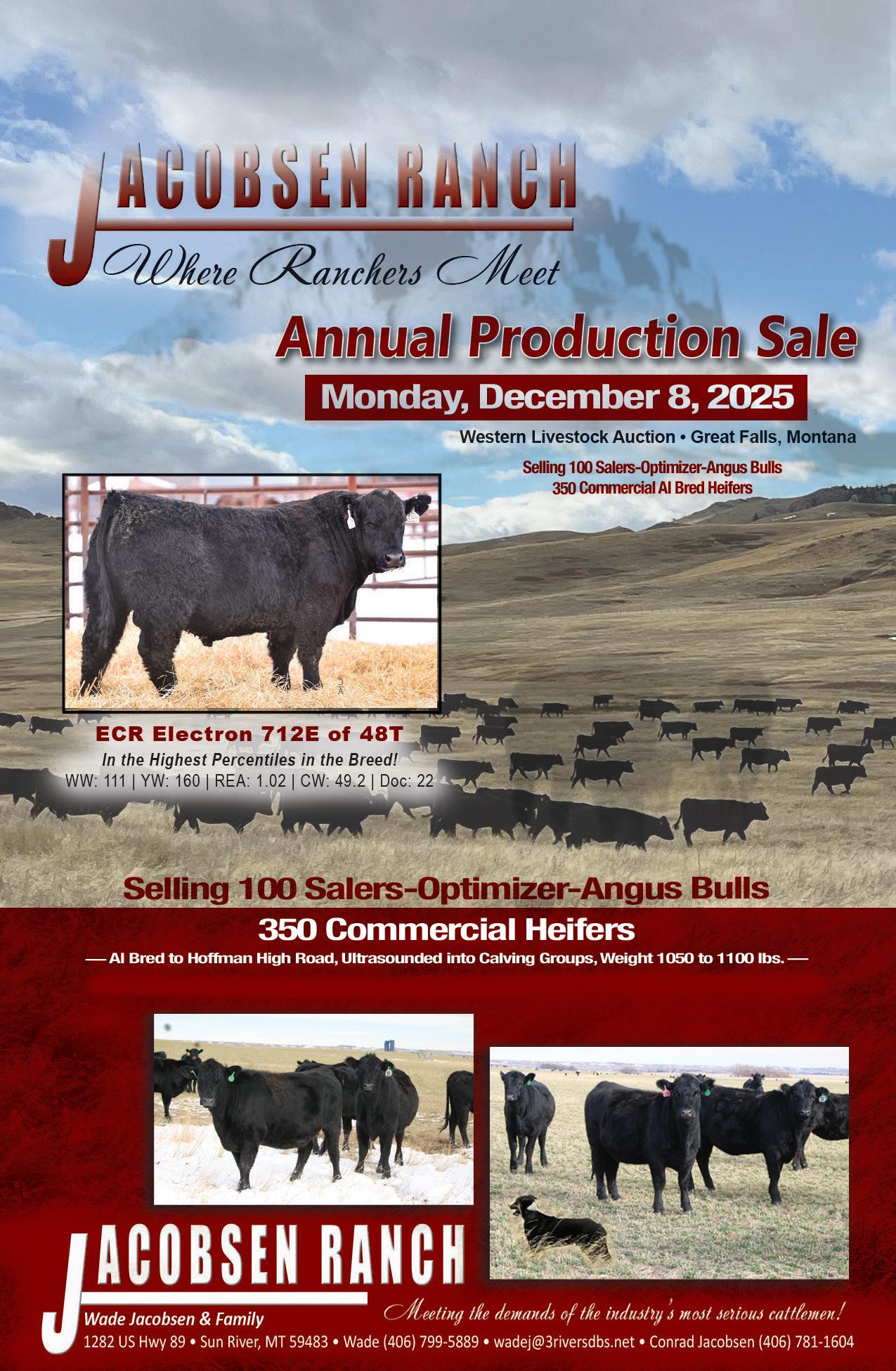Saying things that need to be said.
A Different Animal
Just because plant-based beef is in a downward spiral doesn’t mean that our problems with alternative beef are over, in fact, it could be argued that our biggest battle is yet to come. After all, how does real beef compete with real beef?
Warning!
This is going to get complicated because one classification of real beef is raised on our nation’s grasslands and in feedlots while the other is cultivated beef made from real beef cells that are raised in scientific laboratories in sterile conditions much like a prescription drug would be made. And the production of what are called pharma-foods is where a lot of smart money on Wall Street is placing their bets. Even Tyson and JBS, the two biggest names in traditional beef production, are investing in lab-based meat. Beef made in labs is a far different animal than plant-based burgers and it’s going to take a different kind of defense than what was employed with plantbased beef because whether beef is produced from cows eating grass, or in a beaker in a lab, how does one criticize one beef without condemning the other?
Cruelty Free Beef
Ever since Dutch scientist Mark Post unveiled the first lab beef burger on live television in 2013, companies have been experimenting with the idea that lab-based beef could someday replace conventionally produced beef. In 2015 there were two companies trying to devel-

identical to conventional beef.
One big difference between the lab-based meat fraternity and the plant-based crowd is the veg-head’s stated goal was to completely rid the world of cowboys and cattlemen by replacing conventional beef once and for all. While the lab-meat promoters, for the most part, say they only want to augment the supply of protein to “meet the growing global demand for protein in a more humane way.”
Take care of yourself as well as you do your horse and you’ll both be healthy.
op lab-based meat, fast forward ten years and the industry has grown to over 175 companies on six continents, backed by over $3.1 billion in investments. And here’s the scariest part: according to Hudson Robotics, a half gram of cow stem cells could theoretically produce 4.4 billion pounds of ground beef! And we’re talking about genuine real beef that could be nutritionally
At least that’s what they’re saying for now.
The stated goal of the lab-coatcrowd is to provide one half of one percent of total meat supply (including seafood) by 2030 which would make it a $25 billion dollar industry! Its promoters say lab-meat is “cruelty-free” and is more sustainable than traditional meat. And according to the Food and Drug Administration, lab-grown meat is safe for humans to eat. Unlike plant-based beef, it’s not com-
USDA Announces Opening of Sterile Fly Dispersal Facility in Tampico, Mexico
The U.S. Department of Agriculture (USDA) has announced the next milestone in the fight against New World screwworm (NWS) – the opening of a sterile fly dispersal facility in Tampico, Mexico. The Tampico facility will allow USDA to disperse sterile flies aerially across northeastern Mexico, including in Nuevo Leon.
“The opening of the Tampico sterile fly dispersal facility is another incredibly important tool in our arsenal to stop the spread of screwworm. The facility will ensure flexibility and responsiveness in northern Mexico, giving us a greater ability to drop sterile flies and continue to push the pest south,” said U.S. Secretary of Agriculture Brooke L. Rollins.
“Stopping the spread of screwworm is a top priority for the entire Trump Administration. Last week I had a productive meeting with Mexican President Claudia Sheinbaum and my counterpart Secretary Julio Berdegue on the joint response to screwworm. We are boosting our efforts and completing a joint review of our screwworm operations in Mexico to ensure our protocols are being followed. As we enter the winter months, we continue to prioritize the response in Mexico and the rest of our five-pronged plan to protect U.S. livestock and the livelihoods of American farmers and ranchers.”
posed of three dozen different ingredients and it tastes like real beef because it is real beef.
Printing Meat
The Good Food Institute is the de-facto mouthpiece for the lab-meat industry. They are a self-described, “Nonprofit think tank working to make the global food system better for the planet, people, and animals. As an international network of organizations, we advance alternative proteins to help meet climate, global health, food security, and biodiversity goals.”
We’ll let the Good Food Institute describe how lab-meat is made: “The manufacturing process begins with acquiring and banking stem cells from an animal. These cells are then grown in bioreactors (known colloquially as cultivators) at high densities and volumes. The cells are fed an oxygen-rich cell culture medium containing basic nutrients such as amino acids, glucose, vitamins, and inorganic salts, and typically supplemented with growth factors and other proteins. Chang-
continued on page 2
EPA Proposes Scaled-Back Definition of Protected US Waters
BY BOBBY MAGILL & STEPHEN LEE, REPORTERS WITH ASSISTANCE FROM SKYE WITLEY / BLOOMBERG LAW
On November 17 The EPA proposed a revised definition of waters of the US, putting the second Trump administration’s stamp on wetlands protections.
The proposal aims to bring Clean Water Act protections for waters and wetlands in line with the US Supreme Court’s 2023 ruling in Sackett v. EPA, which reduced the scope of federal jurisdiction over waters and wetlands. The Biden administration issued a rule conforming to Sackett, but the EPA says this proposed rule is more in line with the ruling.
If finalized, the rule would reverse the Biden administration’s definition of waters of the US, or WOTUS, continuing a nearly two-decade tradition of each new president updating the terms of federal waterway protections. The public will have 45 days to comment on the proposal once it’s published in the Federal Register in the coming days.
The proposal is meant to be “durable,” and stop the swinging pendulum of new WOTUS definitions and regulatory overreach, EPA Administrator Lee Zeldin said in a statement.
Even after the Sackett ruling, the Biden administration attempted to claim most of Alaska’s Arctic Coastal Plain as wetlands protected
Riding Herd
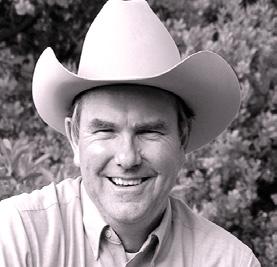
by
Bovine Bill of Rights
Just as Thomas Jefferson is remembered as the author of the Declaration of Independence and James Madison as the principal author of the Constitution, so too will I be remembered for The Bovine Bill of Rights.
Article X: Beef animals not retained for breeding shall have the right to be placed in feedlots where they will be served breakfast in bed every morning and fed supper after their afternoon nap. They have the right to gobble down as much tasty feed as they desire of a delicious and expensive ration consisting of mouthwatering grains, appetizing roughage and sugary molasses for dessert. And all without having to worry about being bullied and made fun of by their fellow bovines for their obesity.
Article IX: Cattle shall have the right to clean water and tight fences to prevent having to intermingle with the neighbor’s inferior mongrels.
Article VIII: Bovines shall have the right to be transported in a well-ventilated trailer free from any off-putting fragrance from leftover swine or sheep dung. They have the right to be transported to their new destination as quickly as possible without speed governors or being stopped by over-zealous highway patrolman or delayed by over-eager scale masters.
Article VII: At a branding, and periodically through the year, cattle have the right to be injected with pricey pharmaceuticals to keep them healthy and alive. Bovines also have the right to be branded so that after blizzards, floods or fires they can be sorted and returned home. They also have the right to wear ear tags to ward off flies and to provide additional information such as their sire. Cattle shall have the option to wear electronic ear tags but only if their caretaker deems them necessary.
Article VI: During a threeday snowstorm cattle have the right to be kept alive by ranchers wearing five layers of clothing and with icicles hanging from their mustaches bringing them life-giving hay in the blinding snow.
Article V: Cattle have the right to a painless death, free from worry about ignorant politicians and urban bureau-

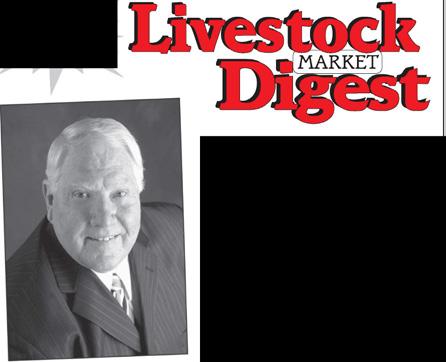
Take your marketing
Take your marketinJ.{ program to the topf

Advertise in the Contact Randy
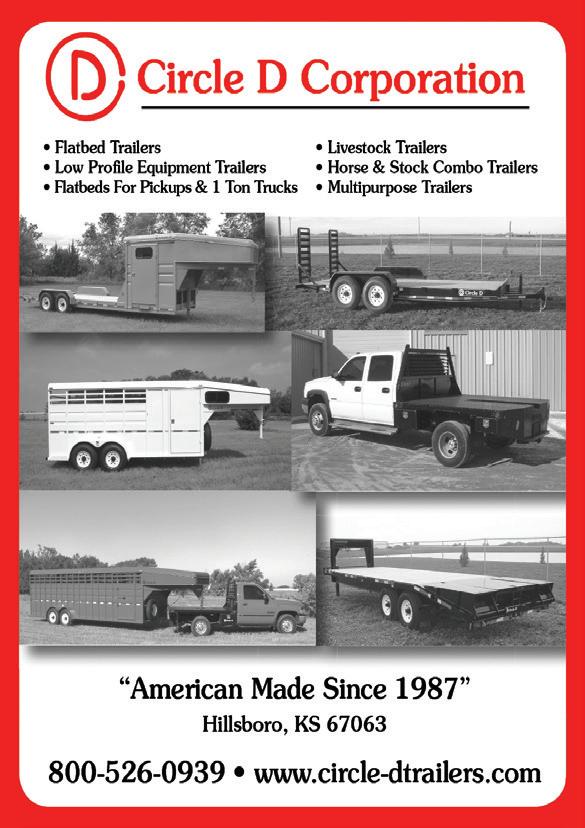

es in the medium composition, often in tandem with cues from a scaffolding structure, trigger immature cells to differentiate into the skeletal muscle, fat, and connective tissues that make up meat. The differentiated cells are then harvested, prepared, and packaged into final products. This process is expected to take two to eight weeks, depending on the kind of meat be-
Summers
ADVERTISING REPRESENTATIVE
Office: 505/243-9515 Cell: 505/850-8544 rjsauctioneer@aol.com
One thing the lab-meat scientists and cattle producers have in common is that instead of breeds, the scientists can ramble on forever about the different cell lines of meat as if they were two Angus breeders talking about cattle pedigrees.
“According to an industry survey conducted in 2023,” says Good Food, a global food media brand, “cultivated meat manufacturers are using a variety of starter cells, including skeletal muscle stem cells. Starter cells can also sometimes originate from specific organs to create other products. For example, cells from mammary glands can be used for milk production, and cells from livers for foie gras.”
ly half of cultivated meat companies are exploring genetic engineering for either research and development or commercial use, and several patents describing various engineering approaches have been filed.”
There are even companies using 3D printing technology that can be used to “print” the familiar cuts of beef. According to Good Food, “This process, called scaffolding, holds the cells together in a certain configuration and provides the necessary materials to keep the cells healthy and differentiated, so that when the cut gets to your table, it resembles the same shape, texture, and flavor as traditional meat.” Some printers can even use lasers to instantly cook the food as it prints. A company called Steakholder Foods, is already using 3D printing technology to create cultivated pork products.
Too Good To Be True
tion, biodiversity loss, antibiotic resistance, and zoonotic disease outbreaks. Prospective life cycle assessments indicate that cultivated meat will use significantly fewer resources and can reduce agriculture-related pollution and eutrophication. One study showed that if produced using renewable energy, cultivated meat could reduce greenhouse gas emissions by up to 92 percent and land use by up to 90 percent compared to conventional beef. Additionally, it’s expected that antibiotics will not be used in production and will likely result in fewer incidences of foodborne illnesses due to the lack of exposure risk from enteric pathogens.”

“The most common method of acquiring starter cells is to take a cell sample from a live animal, which can be performed using minimally invasive methods. In some cases, these cells may also be acquired by biopsying a recently slaughtered animal where the tissue is still viable, which could be important for determining compliance with religious laws (e.g., halal, kosher). In all cases, the acquired cells originate from healthy animals alongside extensive documentation that ensures the quality and traceability of the cells.”
Now here’s where things start to get a little worrisome. Since the meat is grown in a lab, that makes it too easy for scientists to genetically engineer changes in the lab meat by removing, rearranging, or introducing DNA. A 2023 survey found that near-
For advertising, subscription and editorial inquiries write or call:
Livestock Market Digest P.O. Box 7458 Albuquerque, N.M. 87194
Livestock Market Digest (1SSN 0024-5208) (USPS NO. 712320) is published monthly except semi-monthly in September in Albuquerque, N.M. 87104 by Livestock Market Digest, Inc. Periodicals Postage Paid at Albuquerque, N.M.
POSTMASTER-Send change of address to: Livestock Market Digest, P.O. Box 7458, Albuquerque, N.M. 87194
— MY CHECK IS ENCLOSED FOR —
One Year: $35 Two Years: $45 Single copy: $10
Clip & mail to: Livestock Market Digest, P.O. Box 7458, Albuquerque, N.M. 87194
Telephone: 505-243-9515 Fax: 505-349-3060 www.aaalivestock.com
EDITORIAL and ADVERTISING STAFF
CAREN COWAN Publisher
LEE PITTS Executive Editor
CHUCK STOCKS Publisher Emeritus
RANDY SUMMERS Sales
FALL MARKETING EDITION AD SALES
RANDY SUMMERS, 505-850-8544 email: rjsauctioneer@aol.com
FIELD EDITOR
DELVIN HELDERMON, 580/622-5754 1094 Koller Rd, Sulpher, OK
ADMINISTRATIVE and PRODUCTION STAFF
KRISTY HINDS Graphic Designer
All subscriptions non-refundable.
When the world’s first cultivated-beef burger was served in London in 2013, it cost $330,000 to create, but costs have since come down drastically and lab-based beef currently costs about 40 percent more than traditional beef. But its promoters insist that costs could become comparable in price to conventional beef. According to Good Food, “Over the next few decades, cultivated meat and other alternative proteins are predicted to take significant market share from the $1.7 trillion conventional meat and seafood industries.”
Singapore was the first to offer lab-meat for sale in 2020 and as of July of this year, cultivated meat is legally sold in Singapore, the United States, and Australia. A total of five companies have received regulatory clearance to sell multiple cultivated meat products: A company called GOOD Meat is selling cultivated chicken in Singapore and U.S.; UPSIDE Foods is selling cultivated chicken in the U.S.; Vow is selling cultivated quail in Singapore and Australia; Wildtype is selling cultivated salmon in the U.S.; and Mission Barns is selling cultivated pork fat in the U.S.
Currently cultivated meat products are under regulatory review in ten countries or regions, including the U.S., the European Union, Singapore, Israel, Australia and New Zealand, Switzerland, the United Kingdom, Thailand, and South Korea. Other countries are at various stages of developing regulatory frameworks to permit the sale of cultivated meat.
To get their costs to where they are competitive will require commercial production in significantly larger facilities than what currently exists. Proponents also say it will also need an influx of public and private sector funding, although using taxpayer dollars for such a project is problematic, but we can envision animal rights groups like PETA and vegetarian-inclined multi-billionaires from the tech world lining up to lavish the labsters with cash.
Pros And Cons
According to Good Food, “Cultivated meat is expected to have numerous benefits over conventional animal agriculture by nature of its controlled and more efficient production process. This shift could mitigate agriculture-related deforesta-
But there are also many negative impacts associated with lab-meat. For one thing, it uses lots of energy to produce. And the environmental impacts are way overstated by its promoters. Lab grown meat also comes with a great deal of risk, as well as being very resource intensive and environmentally harmful. This combined with the impossibility of it doing more than taking over a tiny fraction of the demand for meat makes it a high risk, low reward investment.
One of the big problems with lab meat is that it has to be “raised” in a totally sterile environment because the cells have no natural immunity to disease. That’s because lab-grown cells don’t have an immune system like normal farm animals do. This inherently increases the likelihood of cultured cells to become contaminated in ways that could potentially make millions of humans sick. And like plant-based meat, some of the additives are questionable, like calcium propionate, a preservative that can cause migraines and headaches; sodium nitrate, a preservative known to cause high blood pressure; and BHA and BHT, two preservatives that are believed to be carcinogenic.
A study done by the United Nations Food and Agriculture Organization and the World Health Organization indicated that the molecules used for cell cultivation pose harm to the metabolism and have been connected with cancer development. And that’s the UN bashing lab-meat!
Pharma-Foods
UC Davis researchers found that cultivated meat is likely worse for the climate than retail beef under current production methods. “Lab-grown meat, which is cultured from animal cells, is often thought to be more environmentally friendly than beef because it’s predicted to need less land, water and greenhouse gases than raising cattle.” But UC Davis researchers have found that lab-grown or “cultivated” meat’s environmental impact is likely to be “orders of magnitude” higher than retail beef based on current and near-term production methods.
“UC Davis researchers conducted a life-cycle assessment of the energy needed and greenhouse gases emitted in all stages of production and compared that with beef. One of the current challenges with lab-grown meat is the use of highly refined or purified growth media, the ingredients needed to help animal cells multiply. Currently, this method is similar to the biotechnology used to make pharmaceuticals. This sets up a critical question for cultured meat
production: Is it a pharmaceutical product or a food product?
“If companies are having to purify growth media to pharmaceutical levels, it uses more resources, which then increases global warming potential,” said lead author Derrick Risner, UC Davis Department of Food Science and Technology. “If this product continues to be produced using the “pharma” approach, it’s going to be worse for the environment and more expensive than conventional beef production.”
The scientists also found that the global warming potential of lab-based meat using these purified media is four to 25 times greater than the average for retail beef. “Our findings suggest that cultured meat is NOT (emphasis ours) inherently better for the environment than conventional beef. It’s not a panacea,” said corresponding author Edward Spang. “It’s possible we could reduce its environmental impact in the future, but it will require significant technical advancement to simultaneously increase the performance and decrease the cost of the cell culture media.”
Backlash!
“Lab-grown beef is not currently available in any U.S. grocery stores or restaurants and if some lawmakers have their way, it never will be,” says Dee Ann Durbin in an Associated Press story. An Israeli company has received preliminary approval to sell the world’s first steaks made from cultivated beef and China is also investing heavily in lab-grown meat. But there’s been a big backlash in the U.S. Lawmakers in seven states have banned the sale of cultivated meat and in Iowa, the governor signed a bill prohibiting schools from buying it. This adverse response isn’t confined to the U.S. as Italy and France have already banned lab-meat and as this story was being written the European Parliament voted to ban plant-based and lab-grown products from having meat-related names such as “burger,” “sausage” or “steak” on their labels.
Senator Jack Williams, the sponsor of Alabama’s bill to ban lab-meat wrote to the Associated Press stating that, “Meat comes from livestock raised by hardworking farmers and ranchers, not from a petri dish grown by scientists.”
According to the Texas Tribune, “In June, Texas lawmakers passed Senate Bill 261, which bans the sale of lab-grown meat in Texas for two years.” In response, lab-meat companies filed a lawsuit against the Texas ban, accusing them of government overreach. They say, “the ban is “unconstitutional” and “un-American.”
Last year, the Institute for Justice filed a similar lawsuit in Florida.
Texas lawmakers have expressed concerns that cultured meat will disrupt traditional family farms in Texas, as well as concerns over product labelling and safety. According to the Texas Tribune, there are also, “Concerns over the transparency and labeling, risk of contamination, and long term health impacts of consuming cell culture products.” Consider the possibilities. If that half-gram of cells mentioned earlier contains one sick cell it has the potential to infect 4.4 billion pounds of beef! ▫
There are two methods of dispersing sterile insects – aerial dispersal and ground release chambers. Aerial operations are preferred because they allow for dispersal at a steady rate through a large area and also because sterile insects may be dispersed in areas that are unreachable from the ground. Ground release chambers are used when there’s a need to quickly deploy sterile insects outside of the dispersal facility range.
USDA continues to disperse 100 million sterile flies per week in Mexico, but until now, aerial operations have been limited to southern Mexico, necessitating the use of ground release chambers in more northern areas of the country. Mass production and targeted dispersal of sterile flies remain critical components of our effective response.
Although Mexico continues to confirm new cases of NWS,
the overwhelming majority of these remain in the far southern part of the country, with no significant northward expansion over the past several months. Should that change, the Tampico facility will allow USDA to immediately tackle any cases that occur elsewhere in Mexico.
The two northernmost detections (approximately 70 and 170 miles from the U.S. border, respectively) occurred in Nuevo León, on September 20 and October 5, in young cattle transported from Chiapas, Mexico. Neither of those cases is still active and there have been no additional detections of NWS flies in traps or cases in animals in Nuevo Leon. USDA continues to disperse sterile insects in Nuevo Leon, and will now transition from ground release chambers to aerial dispersal in those areas.
USDA produces sterile flies for dispersal at the COPEG facility in Panama. USDA is also investing $21 million to support
Mexico’s renovation of an existing fruit fly facility in Metapa—which will double NWS production capacity once complete. With ongoing support from APHIS technical experts, Mexico anticipates this sterile fly production to begin as soon as summer 2026.
To expand our domestic response capacity, USDA has also begun construction on a sterile fly dispersal facility at Moore Air Base in Edinburg, Texas that is projected to begin operating in early 2026. APHIS is also expediting design and construction of a sterile fly production facility in Southern Texas, with a targeted maximum capacity of 300 million sterile flies per week.
USDA continues to work with Mexico’s agriculture authority, SENASICA, to implement the collaborative NWS Action Plan and guide trapping, surveillance, and movement protocols to help stop the northward spread of NWS. ▫



Livestock Digest
P.O. Box 7458
Albuquerque, NM 87194
505/243-9515 • Fax 505/998-6236
caren@aaalivestock.com www.aaalivestock.com
Have that "hard to buyfar''Jriend or relative?
Why not gift them with a subscription to the Livestock Market Digest? They will get a reminder of you every month AND stay up with the news and views of the livestock and ranching business!
To:

Cattle Health Impacts Carcass Traits
BY BOB LARSON, DVM, PHD, REPRODUCTIVE PHYSIOLOGIST AND EPIDEMIOLOGIST, BEEF CATTLE INSTITUTE /KANSAS STATE UNIVERSITY
lower marbling scores as well as less external fat and smaller ribeye area than cattle without respiratory disease.
and to ensure that the calf has good post-weaning growth and health.
IYou have received a year subscription to the Livestock Market Digest.
SUBSCRIPTION RATES: 1-year $25, 2-year $35



ADVERTISING
Office: 505/243-9515 Cell:
505/850-8544
rjsauctioneer@aol.com
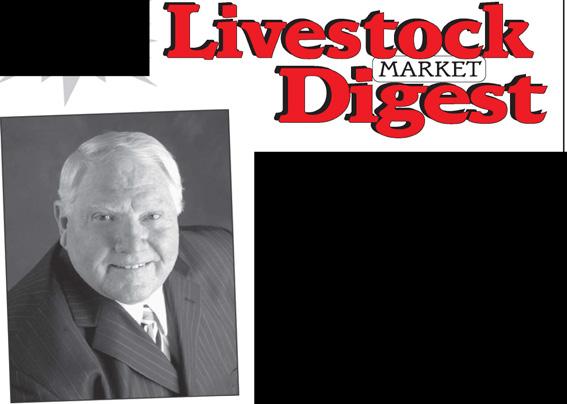


t is important for everyone involved in beef cattle production, including seedstock producers, cow-calf producers, backgrounders and stocker operators, feedlot managers, packers, retailers, feed suppliers, and veterinarians to remember that all the money distributed among the many participants is generated by the sale of beef to consumers.
While it is true that carcass traits and beef product attributes are largely influenced by the genetic decisions of seedstock and commercial cow-calf producers and the feeding decisions of feedlot managers and nutritionists, the animal health decisions made by producers and veterinarians throughout the production chain also play a role. A number of studies have indicated that muscling, marbling, and tenderness all can be negatively impacted by cattle health problems.
Studies of consumer preferences have indicated that attributes such as flavor, tenderness, marbling, and texture are important when evaluating the eating experience when consuming beef cuts. These consumer expectations are important when considering the impact of animal health because pneumonia and other common cattle diseases have the potential to affect not only carcass weight, but also the amount, location, and ratio of muscle, fat, and water.
Bovine respiratory disease (pneumonia) is the most important cause of illness and death in feedlot cattle with digestive diseases such as acidosis and bloat also being important. Several studies have shown that cattle that experienced respiratory disease had lighter hot carcass weight, lower dressing percent, less internal fat, and
Wolves Introduced to Colorado Test Positive for Hydatid Disease
SOURCE: HOPE SCHEPPELMAN
FOR CONGRESS / COLORADO
Wolves relocated from Oregon to Colorado have tested positive for Hydatid disease, a parasitic infection caused by a tapeworm that cycles between wild carnivores and grazing animals. This disease can spread quickly across large landscapes, raising concerns for wildlife, livestock, pets, and even people.
Earlier this year, Colorado ranchers collected wolf feces from their properties and
Scientists don’t have a clear picture of how disease impacts carcass traits, but probably a combination of changes in hormones such as insulin, growth hormone, and other signals that direct the growth of muscle and the deposition of fat are involved. In addition, just the fact that cattle are off-feed while they are sick may impact the pattern of muscle growth and fat deposition.
The negative effects of disease on carcass traits may not be confined to the time cattle are in a feed yard. As we learn more about muscle growth and fat deposition, it appears that stress, disease, or poor nutrition even early in life can have consequences on feedlot and carcass performance.
This understanding makes a life-long health and nutrition plan to minimize disease risk and ensure optimum growth from birth to slaughter important for efficient production of a desirable beef product. Beef producers should work with veterinarians to optimize sanitation, nutrition, immunization, and biosecurity to reduce the risk of disease.
In addition, because the negative effects on growth and carcass traits appear to be more severe in animals with prolonged or multiple episodes of sickness compared to animals that become sick for a short period of time and then recover, knowledge and ability to accurately identify sick animals and to treat them in a timely manner also becomes increasingly important.
Life-long cattle health starts with the cow being in good body condition and receiving all necessary nutrients throughout pregnancy and then giving birth without calving difficultly in a clean environment. If the calf is born healthy and able to quickly stand and suckle and that calf is not exposed to mud and manure, it is likely to avoid the risk of scours and pneumonia during the time period from birth to weaning. Adequate forage availability for both the cow and calf until weaning is essential to maintain optimum health
submitted samples for testing at Kansas State University. The official reports confirmed the presence of Hydatid tapeworms. More recently, secret recordings related to Colorado’s wolf program have surfaced, fueling fears of misinformation and lack of transparency.
Possible Violation of the Lacey Act
The findings also raise questions about whether Colorado’s wolf introduction program violates the Lacey Act—a federal law designed to prevent the transport of wildlife known to carry dangerous diseases such as rabies, distemper, and Hydatid tapeworms. The Act also regulates the importation of potentially harmful species to protect U.S. ecosystems, livestock, and public health.
If wolves were knowingly relocated into Colorado while carrying this parasite, the decision may conflict with the Lacey Act’s intent. This leaves many asking:
Effective vaccines are available for a number of important disease-causing germs including the bacteria that cause blackleg and related diseases, and the viruses and bacteria that contribute to bovine respiratory disease. Both internal parasites (worms) and external parasites (flies, ticks, and lice) can cause significant disease in calves; and proper use and timing of deworming and external parasite treatments greatly aids in cattle health and well-being.
The time period around weaning is a period of high risk for respiratory disease and other diseases. Implementation of well-designed preconditioning programs that utilize low-stress weaning, vaccinations, parasite control, and acclimation to post-weaning diets and feeding and watering equipment is an excellent disease control strategy.
Carcass premiums and pricing on carcass merit grids has caused the veterinary profession to re-evaluate the cost of cattle diseases. Historically, veterinarians and beef producers have considered the cost of disease to be confined to death loss, treatment cost, decreased feed efficiency, and reduced live weight. However, because many cattle are now sold on a carcass merit basis, disease has the potential to affect profitability not only through treatment costs, death loss, and reduced weight, but also the amount, location, and ratio of muscle, fat, and water and the ultimate desirability of the final beef product.
Ensuring that consumers have a satisfying experience every time they eat beef requires that all the participants in the beef production chain do their part to improve and protect the attributes of flavor, tenderness, marbling, and texture. In addition to the significant impacts that genetics and nutrition play on carcass and product traits, cattle health also has an important role; and a plan to optimize health from birth to slaughter is an important component of providing a high-quality beef product. ▫
Why Hydatid Disease Matters
Hydatid disease is a serious threat. The parasite’s eggs are shed in wolf feces and can contaminate soil, water, and plants. When grazing animals like deer, elk, sheep, or moose ingest the eggs, they develop fluid-filled cysts in vital organs. These cysts weaken or kill wildlife and livestock, reducing herd health and productivity.
The risk doesn’t stop there— humans and pets can also become infected. In people, cysts may remain hidden for years before causing severe, sometimes fatal complications when they rupture or press on organs.
Bottom line: The presence of Hydatid disease in Colorado’s wolves raises urgent questions of law, transparency, and public safety. Policymakers, ranchers, and residents alike must now consider the potential consequences of introducing diseased predators into the state.
“Democrat Administrations have weaponized the definition of navigable waters to seize more power from American farmers, landowners, entrepreneurs, and families,” Zeldin’s statement said.
The proposed rule would more clearly define terms the Supreme Court used in Sackett to determine what kind of waters are protected under the CWA.
The justices in Sackett ruled protected wetlands must be relatively permanent with a “continuous surface connection” to, and “indistinguishable” from, navigable waters, “so that there is no clear demarcation between ‘waters’ and wetlands.”
Bureau Federation, previously urged the Trump administration to exclude pipes, ditches, and other common farm features from its definition.
But those exclusions could exclude arid regions of the country from having any waters that fall under federal jurisdiction, said Larry Liebesman, a former Justice Department attorney who is a senior adviser for environmental permitting firm Dawson & Associates.
The proposal’s exclusion of ditches and swales is striking because a wetland will only be protected under the Clean Water Act if it clearly abuts a navigable water, he said.
risey (R).
Morrisey also called previous versions of the rule a “textbook example of federal overreach.”
Other lawmakers at the gathering said the EPA’s proposal is a prime example of cooperative federalism at work.
“Nobody cares more about having clean water than the state of Idaho does, and the citizens of Idaho,” said Representative Mike Simpson (R-Idaho), chair of the House appropriations committee that handles the EPA and Interior Department.
crats turning wolves and grizzly bears loose in cattle country to devour their calves and rip them apart limb by limb. Unlike humans who may suffer through chronic pain or depression and end up in old geezer rest homes and concentration camps for dementia patients, market-ready cattle also have the right to a painless death, something their human caregivers will never get to experience.
Article I: Bovines have the right to be cooked and eaten by humans providing people with the necessary ingredients required for life. This time-honored meat-eating custom by people goes back three million years and makes it possible for humans to continue the practice of raising cattle, thereby giving the bovines a wonderful life they probably wouldn’t have had otherwise. ▫ HERD cont from page 1 as WOTUS.
The proposal would require that for tributary streams to be considered federal waters, they have to connect to navigable waterways directly or through “features that provide predictable and consistent flow,” according to EPA’s announcement.
Sackett required WOTUS to be indistinguishable from navigable waters. The proposed rule defines that as waters that touch a navigable water and “hold surface water for a requisite duration year after year,” EPA said.
Ephemeral streams, possibly including desert washes and arroyos common in Southwestern states, are not considered protected waters under the proposed rule because they aren’t “relatively permanent,” it says. “Surface hydrology would be required to be continuous throughout the entirety of the wet season.”
Ditches, converted cropland, waste treatment systems, and groundwater would not be considered WOTUS under the proposed rule, EPA said. The groundwater exclusion is a holdover from the Biden administration, but the agency said the new proposal makes the exclusion more explicit.
The proposal would strengthen local and tribal decision-making authority, the agency said.
More Certainty
Farm and ranch groups, including the American Farm
The proposal would remove “many areas of the country that have ephemeral and intermittent streams and wetlands that are a considerable distance from traditionally flowing streams,” Liebesman said.
The new rule will be a relief to farmers and ranchers caught up in “red tape” under previous definitions, the National Cattlemen’s Beef Association said in a statement.
“Today’s WOTUS announcement finally acknowledges that the federal government should work to protect lakes, rivers and oceans, rather than regulating ditches and ponds on family farms and ranches,” said Mary-Thomas Hart, the association’s chief counsel.
The Farm Bureau said it’s still reviewing the rule, but it addresses government overreach highlighted in Sackett.
“We are pleased that the new rule protects critical water sources while respecting the efforts of farmers to protect the natural resources they’ve been entrusted with,” said Farm Bureau President Zippy Duvall.
Several Republican lawmakers stressed in comments Monday immediately preceding the announcement of the proposal in Washington that the new rule will give farmers, ranchers, contractors, and small business owners more certainty about what they are and aren’t allowed to do, thereby avoiding penalties that can range as high as $37,500 a day, according to West Virginia Gov. Patrick Mor-
The Trump administration is taking steps to reduce the legal uncertainty manufacturers have faced because of constantly-shifting water policy, said Jay Timmons, president and CEO of the National Association of Manufacturers.
The proposed rule “provides a definition that is more consistent with the law” and “better serves manufacturers and the communities we support across America,” Timmons said.
Wetlands Threatened
Environmental groups criticized the proposal, saying it strips protections for many streams.
“The wetlands now at risk of being bulldozed filter our water supplies and protect us from floods,” said Jim Murphy, senior director for legal advocacy for the National Wildlife Federation. “This rule will increase the risk of elevated nitrates and cyanotoxins in drinking water, harming our health.”
Isolated and ephemeral wetlands in the Chesapeake Bay region, such as depressions known as Delmarva Bays and pocosins, will lose federal protections under the rule, threatening valuable wildlife habitat, the Chesapeake Bay Foundation said in a statement.
“Absent robust federal protections, the Bay states and DC must fill the gaps or risk losing wetlands and streams that help save the Bay to short-sighted and irresponsible development and destruction,” Keisha Sedlacek, the foundation’s senior policy director, said in the statement. ▫
Article IV: Cows shall have the right to sex and to be bred by the best bulls the rancher can afford. The rancher shall do everything in his or her power to provide bulls that are worthy of their cows. Cows and heifers shall also have the right to raise their offspring without any interference from deadbeat dads.
Article III: Cows shall also have the right to be aided in a difficult birth even if it means acquiring the expensive services of a qualified veterinarian to perform a Caesarean section.
Article II: Orphan calves shall have the right to be warmed up in a bathtub full of hot water
and then laid on the carper in front of a fire in the fireplace. They shall also have the right to be bottle fed every four hours around the clock. When older, they have the right to be joined by their fellow orphaned calves at a calf ranch and bottle fed twice a day and supplemented with grain and roughage without having to worry about wolves or where their next meal will come from.


TSCRA Leadership Development Foundation Working Grant Program Application
Texas & Southwestern Cattle Raisers Association (TSCRA) Leadership Development Foundation, a 501(c) (3) organization committed to future generations of land and livestock stewards and leaders, announced the application window for the TSCRA Leadership Development Foundation Working Grant Program is now open.
The program will distribute
Neurologic Form of Equine Herpes Virus Confirmed Following Event in Waco
The Texas Animal Health Commission (TAHC) received confirmation of equine herpes myeloencephalopathy (EHM), the neurologic disease linked to equine herpes virus (EHV-1), in a Texas Quarter Horse on November 18, 2025.
The horse attended the 2025 WPRA World Finals and Elite Barrel Race event in Waco, Texas on November 5 through 9, 2025. TAHC staff are working closely with event coordinators, equine owners, and veterinarians to respond to the outbreak, take measures to protect equine, and prevent the further spread of the virus.
Additional participants of this event have been notified by the TAHC and are currently being monitored under hold orders. Owners of horses that may have been in contact with these horses or exposed to EHM should work with their veterinary practitioner to establish appropriate monitoring and diagnostic plans to take precautions.
■ Clean and disinfect tack, boots, equipment, and grooming supplies.
■ When you return to your premises, isolate the hors-
Period Opens
financial capital to business owners with a demonstrated interest in the beef value chain. Applications are open to entrepreneurs in Texas and Oklahoma including cow-calf operations, stockers, feeders, packing plants, large animal veterinary clinics and other industry segments.
To be eligible for consideration for financial assistance, applicants must operate a business in an economically
es that attended the event for at least two weeks.
■ Have the temperature of returning horses monitored twice daily for at least 14 days after last known exposure. If a fever (>102.5°F) or other signs consistent with EHM develop, contact your veterinarian.
■ When doing feeding and chores, work with the returning horses last, wear boots and coveralls, and remove them before working with your other horses.
■ Don’t forget to wash your hands.
■ Submit laboratory samples for clinical horses to Texas A&M Veterinary Medical Diagnostic Laboratory (TVMDL) or other American Association of Veterinary Laboratory Diagnosticians (AAVLD) accredited laboratory.
Clinical signs of EHM in horses may include: fever of 102.5°F or greater (fever most often comes before neurologic signs), nasal discharge, lack of coordination, hindquarter weakness, leaning or resting against a fence or wall to maintain balance, lethargy, urine dribbling, head tilt, diminished tail tone, and penile paralysis.
It is important to remember these signs are not specific to EHM and diagnostic testing is required to confirm infection. If you suspect your horse has been exposed to EHV-1, contact your local veterinarian.
Additional resources for equine owners can be found here:
■ Equine Herpes Myeloencephalopathy Fact Sheet
depressed or blighted area in Texas or Oklahoma and face disadvantages. Eligible applicants must also demonstrate the difficulty of obtaining conventional financing because of such disadvantages.
The TSCRA Leadership Development Foundation Working Grant Program was designed to support individuals establishing, operating or growing a beef business.
The application period is open once annually in the fall and will close Dec. 31.
Details about the TSCRA Leadership Development Working Grant Program, including the application and eligibility requirements, can be found at tscra.org/leadership-development-foundation. ▫
■ Equine Biosecurity Guide
The extent of this EHV-1 outbreak is not yet fully known.
Presentation of EHV-1 in these horses has been acute with rapid progression and high clinical severity. A concerning number of mortalities in horses suspected to have EHM have been reported.
Measures to prevent contact of horses from exposure to the virus and increased biosecurity overall are recommended. TAHC encourages event sponsors to take all necessary precautions to prevent further spread of this virus and protect equine health.
Given the nature of this virus and routes of transmission, and out of an abundance of caution, TAHC recommends canceling or postponing equine events as the best method to protect horses from further exposure until such time as the extent of the current outbreak has been determined.
“Equine owners are encouraged to stay vigilant and monitor animals closely,” said Dr. Bud Dinges, TAHC executive director and state veterinarian.
“Based on current evaluations and the evolving situation, we highly recommend equine owners take this virus seriously and weigh potential risks when commingling equine.”
The equine industry is encouraged to obtain the latest information on equine disease events nationwide on the Equine Disease Communication Center (EDCC) website. Subsequent Texas EHM cases will be posted on the EDCC. ▫

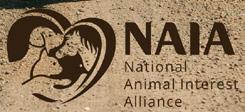
Texas A&M System Launches Two Major MeatRelated Projects
BY CHRIS SCOTT / MEATINGPLACE.COM
The Texas A&M University System recently announced plans to build a major meat science center in addition to adding a research feedlot complex at its West Texas-based affiliated academic institution.
The System’s Board of Regents approved construction of a new Meat Science and Technology Center that will offer modern laboratories, classrooms and a meat processing floor to provide hands-on learning opportunities for Texas A&M-RELLIS students. Ground will be broken on the $114.6-million project early next year and plans include outdoor space to support animal evaluation and handling along with the state-of-the-art laboratories and educational spaces, the university said in a news release.
Funding for the project is being provided by several donors, including Texas A&M AgriLife Research, Texas A&M University, the Texas A&M University System in addition to several other individual donors. The 75,000-square-foot facility is expected to open in the spring of 2028 and is expected to accelerate innovation in meat production and enhance the understanding of the science that can result in sustainable and efficient meat production, school officials noted in the release. Meanwhile, West Texas A&M University broke ground this month to launch construction of a $15-million research feedlot complex near WT’s Canyon, Texas, campus. Plans include developing opportunities for WT students to learn both how and why meeting increasing demand for protein is vital at schools that focus on beef cattle feeding and meat production. Funding for the project involved a USDA grant in addition to individual donors affiliated with the school, which has been part of the Texas A&M University System since 1990, according to a news release announcing the groundbreaking.
Arizona Court To Hear Arguments About Right to a Jury Trial
BY CHRIS WOODWARD | THE CENTER SQUARE CONTRIBUTOR
The Arizona Supreme Court has agreed to hear arguments over whether Arizonans have a constitutional right to a jury trial when they face an accusation from a state agency.
The Arizona Corporation Commission filed an enforcement action in 2024 against EFG America, a rubber recycling company in Mesa.
The commission was alleging securities law violations, said attorney Adi Dynar of Pacific Legal Foundation, the law firm representing EFG America.
The commission was also seeking thousands of dollars in civil penalties and requested the company appear in front of the commission’s in-house administrative law judge.
“At that point, the company and its owners essentially asked the administrative law judge of the Arizona Corporation Commission to change the venue of the case,” Dynar told The Center Square. “In their view, the agency cannot deprive them of their property without asking a court and a jury to decide the merits of the underlying allegations they levied against the company and its owners.”
The administrative law judge denied the request. EFG America then asked the Arizona Court of Appeals to recognize the company’s right to a jury trial in these sorts of commission-initiated enforcement actions. The Arizona Court of Appeals later said jury trials are not available in this circumstance.
That’s when the Pacific Legal Foundation got involved. Foundation attorneys represented the company and its owners in front of the Arizona Supreme Court, asking justices to take the case. The Arizona Supreme Court granted the request. Dynar expects the oral argument to be in January or February. A ruling would most likely come by June or July.
Pacific Legal Foundation said it feels good about its chances. It noted both the Arizona Constitution and the U.S. Constitution’s Seventh Amendment guarantee jury trials in civil cases where the government seeks monetary penalties. Dynar pointed to opinions from U.S. Supreme Court Justice Neil Gorsuch as reaffirming this principle.
Dynar noted Gorsuch noted jury rights “are fundamental checks and balances” in the U.S. and Arizona constitutions. He said the justice pointed to a check on the powers of prosecutors and judges and the importance of stopping “agency abuse in and out of courts.”
“I’m hopeful the Arizona Supreme Court will adopt and give us some much-needed clarity on what, if any, fundamental constitutional rights can be infringed upon by state agencies,” Dynar said. ▫
REAL ESTATE GUIDE



SOME OF OUR OFFERINGS
• Custom Home on 36+ acre estate in Dragoon Mountain Ranch
• 36+ acre homesites in St David, AZ
• 80 Acre Farm land with 16” Irrigation Well in Willcox, AZ
• Custom Home on 4+ acres in Cochise, AZ
• 40 acre off grid land in Portal, AZ
Frank, Designated Broker • 520-403-3903






MIAMI 80+/- ACRES, 3 bedroom, 2 bathroom home with water shares, roping arena, steel barn with shop. Other historic barns, Pipe corrals. Far enough off road to be private. Includes 80 shares of irrigation 2350 SHW 21, Miami NM 87729. $569,999
MIAMI PRIVATE 80, Located ¼ mile off blacktop with dedicated easement, 80 +/- deeded acres, large barn, small sleep out, buried utilities, domestic water meter, 80 shares of irrigation and septic able to handle a 3 bedroom home. Some of the best views in Miami. 2050 HWY 21, Miami NM 87729.$559,000
BAR LAZY 7 RANCH, Colfax County, Moreno Valley 594.38 +/- deeded acres, accessed off blacktop between Eagle Nest and Angel Fire. Historic headquarters. Currently used as summer grazing, pond and trees accessed off county road on rear of property as well. Presented “ASIS” New Survey, $3,800,000 $3,629,000
MAXWELL FARM, 320
+/- Deeded acres, 180.80 Irrigable acres, center pivot, mid 2000’s modular home, two water meters, two barns and one large insulated shop on concrete slab. $848,000


